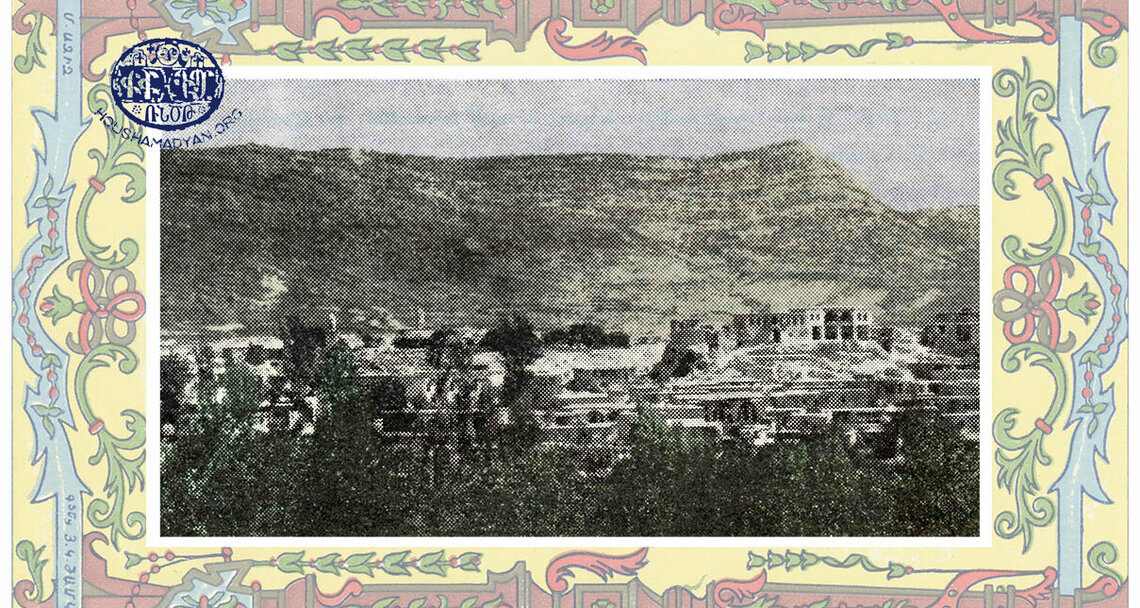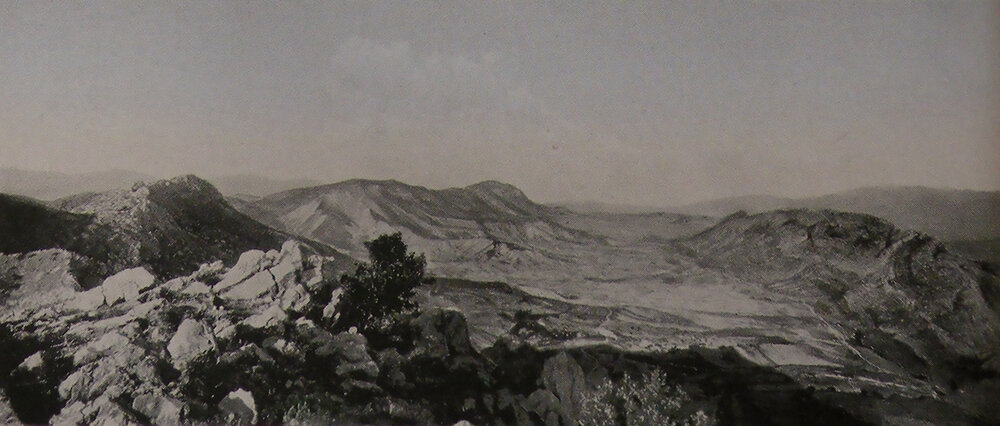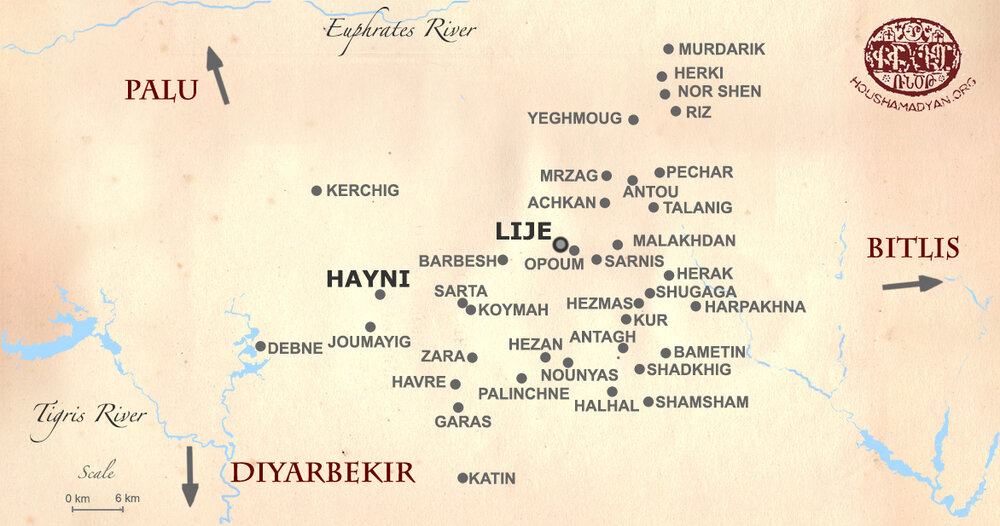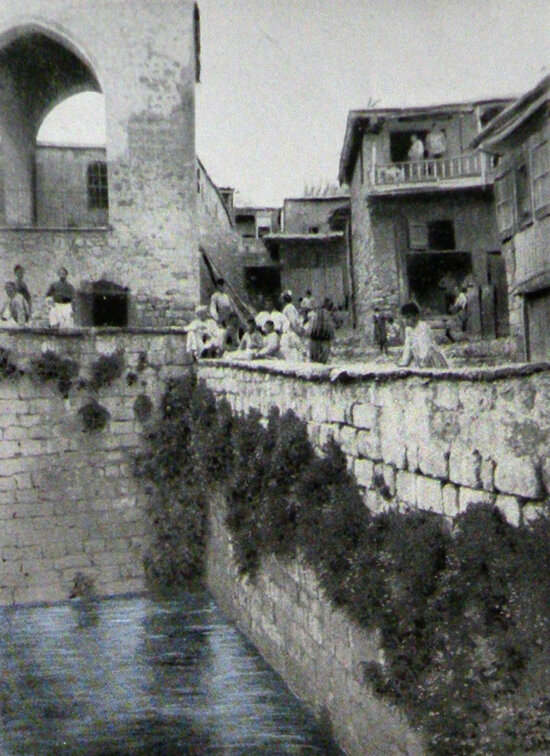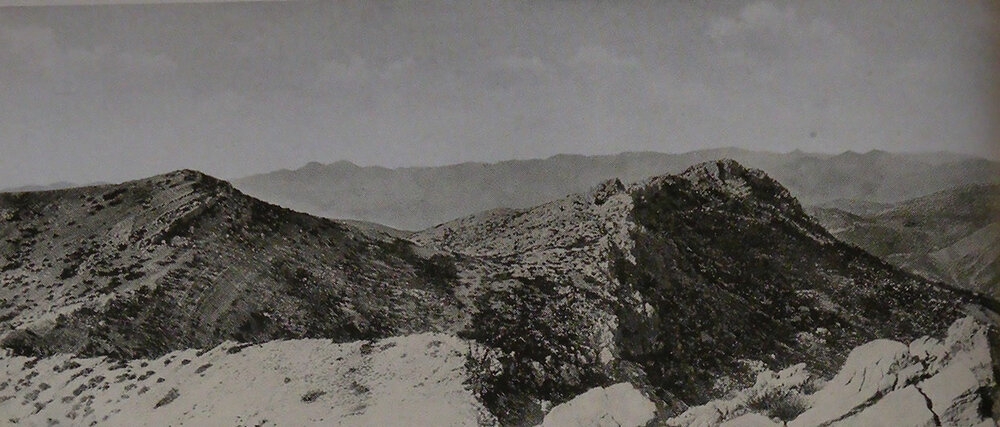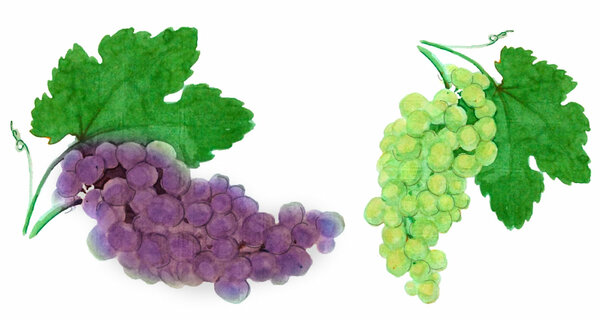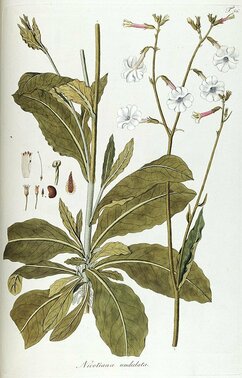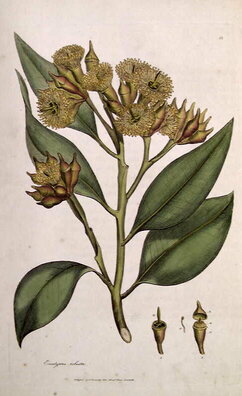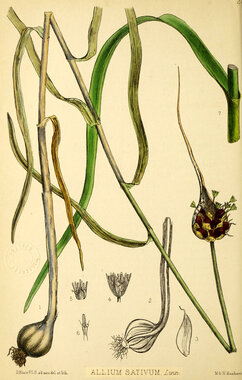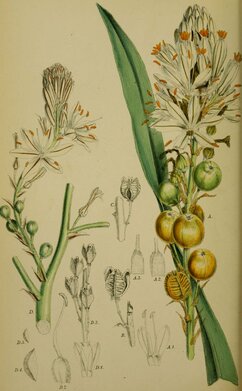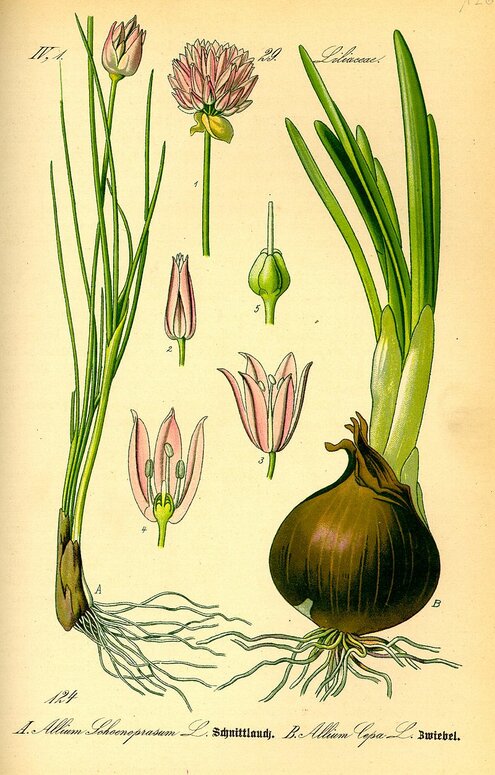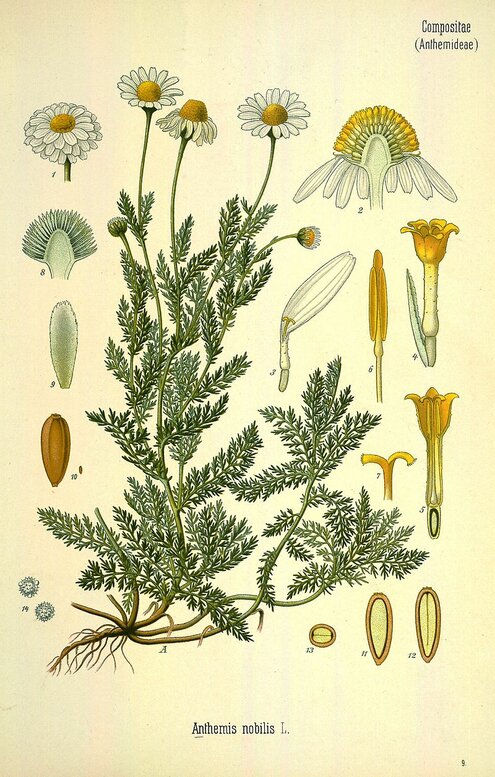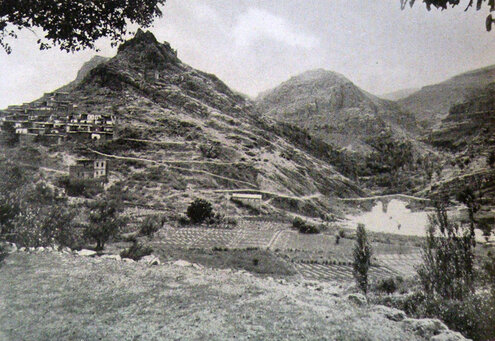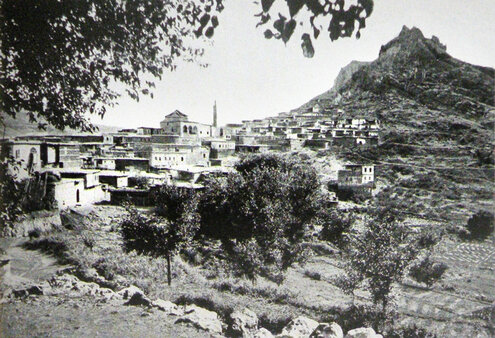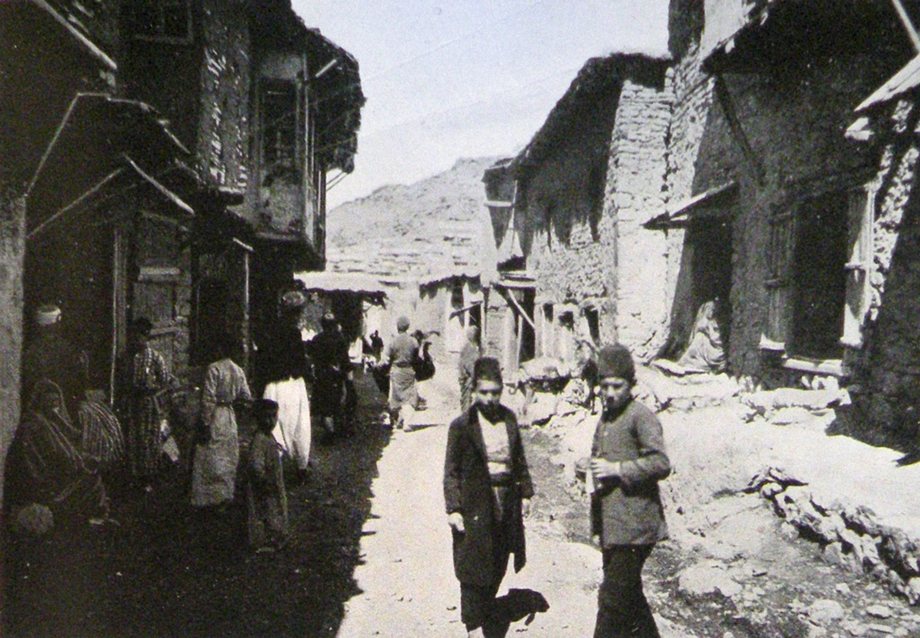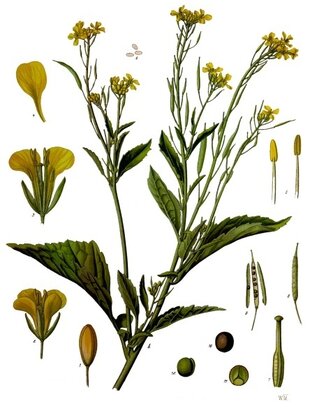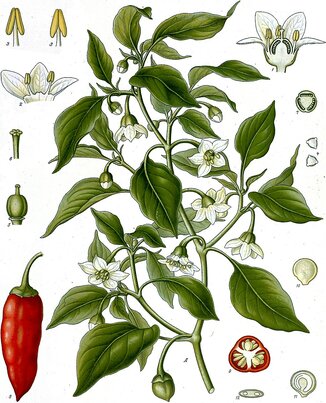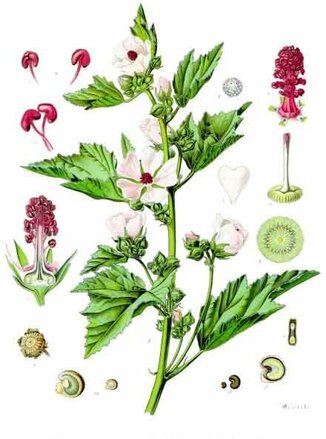Hayni (Hani) – Folk Medicine
Author: Adom H. Boudjikanian , 29/06/2021 (Last modified: 29/06/2021) - Translator: Simon Beugekian

Overview and Geography
This article studies the traditional medical practices of the town of Hayni (present-day Hani), located 90 kilometers north of Diyarbekir, in the kaza (subdistrict) of Lidje.
Penyamin Garabed Jamgochian, a native of Hayni, writes that the town was the heart of a region consisting of about 70 villages. It was in the north of a water-rich valley stretching from east to west, partially ringed by mountain ranges. Many of the tributaries of the Tigris flowed through the valley, and to the northwest flowed the Euphrates [1].
Penyamin Jamgochian was married to my oldest aunt. Our family and my uncle’s family lived together, all ten of us, in a large “patriarchal” household. In Jamgochian’s book, we read that in Hayni, households often numbered 20-40 individuals, representing up to four generations. If any member of a family wished to strike out and establish a new household, it would be very close to the paternal home, in such a way that they would share a single courtyard [2]. We will return to this point later.
According to Jamgochian’s estimate, the population of Hayni was approximately 10,000-15,000, which is about 1,500-2,000 families/households. About half of the town’s population consisted of Zaza Kurds [3].
Naturally, in our household of Kharpertsis [Kharpert Armenians], our “groom/patriarch” from Hayni often spoke of the town and its customs. I remember that in my youth, “desecrating” the home’s atmosphere with tobacco smoke was strictly forbidden. Only two respected ladies, both from Hayni, were allowed to roll their djigharas and to puff on them in our living room. Purportedly, this was a treatment for headaches and toothaches. These two ladies were Hadji Yeva, Delal Khacho’s daughter; and Hadji Anoush, her friend. Both ladies, as well as Jamgochian, were known for the knowledge they had inherited from their elders regarding medical conditions and treatments. For example, to treat harsanit (measles/rubella), they advised consuming sweets, so that the spots would “fall out.” To treat jaundice, Hadji Yeva would suddenly startle and scare the patient (a type of homeopathy). Hadji Yeva was also a seer. She could read people’s fortune from the shape of drippings of molten lead in ice-cold water. For colds, Jamgochian would follow a unique course of treatment: he would wrap his wife’s woolen clothing around his head and breathe in while drinking scalding-hot coffee. This would truly help him recover, to the great consternation of the family’s children… Whenever he was ill, we were free to do as we wished… I also remember how once during Jamgochian’s long tenure as the principal of the Sahakian School in Beirut, when a student complained of a headache, he provided the following medical advice, at no cost: “Go bang young head against the trunk of a eucalyptus (Eucalyptus robusa) tree and repeat ‘I am not sick’ three times. The pain will go away.” This advice is an example of two forms of folk medicine, homeopathy and autosuggestion.

A General Overview of Health and Medicine in Hayni
Occupations
Hayni was not home to any heavy industries, as were Kharpert and Van, where factories produced textile (mostly silk), machinery, and furs. Given the absence of a working class, we can assume that the prevalence of occupational diseases was low in Hayni, with a few exceptions.
Most Armenians in Hayni were engaged in agriculture [4] or the small crafts [5]. They consumed a dozen types of locally grown grapes on a regular basis. Grapes were also used to make wine, arak, and various sweet preserves (rojik, bastegh, kesme, etc.). Over the winter, these confectionaries were consumed with great relish by members of the household and their neighbors. The spirits and wine, meanwhile, were worthy of a temple of Bacchus.
Grapes are about 20 percent sugar [6]. In order to make grape preserves, grape juice must be boiled and the water evaporated. The resulting paste contains 60-70 percent sugar. However, surprisingly, the primary sources that we used for this article do not mention diabetes as a common medical condition in Hayni.
Preparing wine or distilling arak from black grapes was a common household chore in Hayni. Jamgochian was a sworn opponent of the consumption of alcohol. But whenever he was asked if people got drunk in Hayni, he would proudly reply, “Hay! Hay!” [“Yes, yes!”]. Alcohol was probably an important staple of the lengthy feasts held in the fields around the town, as well as holiday celebrations [7]. We attempted to ascertain the effect of the consumption of alcohol on the health of the locals. Unfortunately, our sources make no mention of it.
Among the crafts practiced in Hayni were carpentry; the smithing of copper, iron, and weapons; farriery; watchmaking; jewelry; and cobblery [8]. These occupations generally do not lead to medical problems. The exception was cobblery, which also included working in tanneries. The water used by the tanneries of Hayni flowed out of one of the town’s principal ponds, the Enkebir, in the town center. According to Jamgochian, the name Enkebir was a corruption of the Arabic words ein kebir (big spring). After having been contaminated by the tanneries, this water would make its way to the irrigation ditches, and then would water the town’s fields [9]. These were planted with poplars, willows, fruit trees, and various vegetables. Once can assume that the effluent and organic waste generated by the tanneries polluted the irrigation water and the environs, leading to various infectious diseases and creating favorable conditions for the breeding of swamp mosquitos that spread malaria.
Irrigation, Sanitary Facilities, and Sewers
As far as we know, Hayni lacked these amenities. The homes of Armenians did not have access to running water. Water was obtained from the six local springs and from the several outlets of the Enkebir. The locals bathed and washed their clothing in the open – in the jam mughara [creek of the church], for example. Very few homes had toilets. The women would “sequester” themselves in a corner of the garden, shielded by flax screens or earthen mounds. Human waste was discarded in the public landfill. The men used the town’s public restroom when in the market, built beside a stream flowing from the Enkebir Pond. The stream was reserved for the town’s donkeys. Others preferred to answer the call of nature in the lap of nature. The boulders in the fields outside of the village were surrounded by “latrines.” Jamgochian writes that the human waste was simply piled up until the spring thaw or fall rains washed it away. Domestic human waste, to which was added the manure produced by domestic animals, was discarded in the town landfill with the hope that it would at least partially decompose [10]. It is not difficult to imagine how quickly diseases could spread in such a noxious atmosphere. The reader must have guessed already that Hayni had no functioning sewer system.
Homes
As we have already noted, the Armenians of Hayni lived in multi-generational households consisting of 20-40 individuals and representing up to four generations. Homes consisted of either one or two floors, and depending on their size, could have two to five rooms. Hayni Armenians did not sleep in beds. Instead, they would arrange mats next to each other on the floor and sleep on them. In the morning, the mats would be folded and stored away in special compartments carved into the walls [11]. Family members who left the household would simply build a home next door and become immediate neighbors of the larger family.
In such crammed quarters, it is easy to see how an infectious disease or pathogens could infect an entire household or family.
Women had the duty of plastering the walls of the home and whitewashing them with a mixture of water and lime. To repair the floors, they would collect a type of clay-rich soil from the environs of the town, which they would then dilute in water and mix with manure. They would pour this mixture onto the floors, then compress it with flat rocks until it hardened and dried up [12].
We wonder how much this heavy labor affected the health of women, including pregnant women and their offspring. As we mentioned, women often worked with lime, a substance known to irritate the membranes of the eyes and the nose.
Folk Medicine in Hayni
According to the United Nations World Health Organization (WHO), folk medicine is defined as all medical interventions used to maintain health; and to prevent, diagnose, and treat physical and mental conditions. As practiced by native or indigenous populations, folk medicine is generally based on cultural customs, as well as the experience and knowledge inherited from ancestors. Many of these practices have been vindicated by modern science, including the use of many herbs and plants. Other practices, such as pilgrimages, drinking the waters of miraculous springs, and the use of talismans are not supported by modern medicine. [13].
In Hayni, like in many other places, locals resorted to folk medicine mostly because of the absence of practicing doctors or pharmacists [14].

Folk Medicine Practices, Beliefs, Superstitions, Holy Sites, and the Intervention of Supernatural Forces
Medical Beliefs Associated with Holidays, Special Days, and Numerology
- In order to remain healthy, people were advised to bathe seven times on April 7. It is difficult to imagine how this directive was followed in a town that lacked running water.
- In order to ward off bad luck, people were advised to avoid any type of sewing on Mondays.
- The widely accepted treatment for fear was wine. Unknown individuals would lower jugs full of wine down the chimney of houses. The family would take a cup of that wine, then replace it with a cup of their own wine. In this way, the entire neighborhood would be “vaccinated” against fear [15].
- In order to ensure a plentiful crop of grapes, on Meledin (Candlemas), people would light fires on their roofs. On that same holiday, a fire would be lit in the church courtyard. The ashes and charred wood from this fire would be placed next to the locals’ beehives to bless them.
- In order to ensure that the year was “well-lighted” (prosperous), on Christmas Eve, households would keep their fires lit until dawn.
- It was believed that fortune would favor the member of the household who found the hidden coin in the large kata [type of pastry] baked in the ashes of the hearth on Christmas Eve.
- The locals generally fasted before holidays – for example, before the festivities of the night of Saint Hagop. Otherwise, the saint to whom the holiday was dedicated could “smite” them [16].
In the first of the above examples, we see the symbolism associated with the number seven in the Holy Books.
Superstitions Associated with Animals
- The howling of a dog, the cawing of a crow, and the crowing of a rooster were considered omens of death, misfortune, and calamity.
- For protection against the evil eye, the people of Hayni would rub the blood of a sacrificed animal on their door. They would also hang ram antlers on their walls [17].
Superstitions Associated with Holy Sites
Local holy sites included the khachkar [stela] adjacent to the priest’s house, the seven-pillared mgharan [cave] of the djins [spirits], and the Dedibe cave (a former cloister). The Dedibe cave was a pilgrimage destination on the Feast of Assumption. There was a belief that those who bathed in the Saint Hovhannes Spring, near the Dbnou Monastery, would be cured. But our source does not mention what they would be cured of. Anyone who threw a rock into a sacred body of water was punished by the eponymous saint [18].
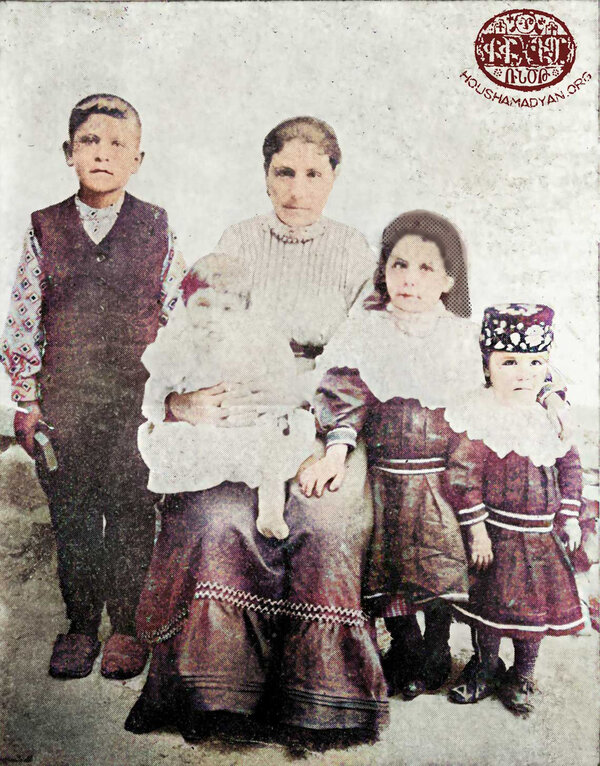
Practices Associated with Pregnancy and Childbirth
Three days after the wedding, once the ceremonies had ended and the celebrations had died down, the newly wedded couple could finally be alone. Once the bride was pregnant, it was her mother-in-law’s duty to inform others by whispering “the stone has stuck to the wall,” a unique local euphemism. The sex of the “stone” could be guessed thus: if the pregnant mother felt pressure on her heart, the child was a boy; if she felt pressure around her stomach, the child was a girl.
During childbirth, the women of Hayni were assisted by local midwives, called tigmar or ptogh. Among them, sources mention Mcho, Mro, and Mahbonents Saro. The tasks of a midwife could also be carried out by the most senior woman in the family. After cutting the umbilical cord, the midwife would wrap the newborn in swaddling clothes and hand him or her to the mother. For the first few days, the mother would keep the newborn with her at all times, after which he or she would be moved to the crib. Warm sand (shroukh in the local dialect) would be placed in the baby’s clothing, in order to absorb the baby’s waste. For the new mother, the family would cook the “Maryam meal,” which consisted of flour mixed with water and roub (grape molasses). This meal contributed to healthy lactation. New mothers were forbidden from drinking water for 40 days after childbirth (perhaps because the water was unsanitary?). However, they could drink the “sherbet” brought by guests. Infertile women were advised to bathe in the hot springs in the city of Djermoug, then pray in the church there; or simply to adopt a child [19].
Grape molasses are made with condensed grape juice. Patel’s studies confirm that the grape is a galactagogue, like many other fruits [20]. It should be noted that in Hayni, grape molasses were often invoked in local adages and the local vernacular. For example, if locals said someone’s “roub was thick,” it meant that he or she was foolish.

Various Medical Conditions and their Treatments
There were no practicing doctors in Hayni. Instead, elderly women, known as hekims, provided medical care to the locals. Their knowledge was based on personal experience and the wisdom they had inherited from their elders. Common practices included herbal medicine and cupping therapy (hedjmet).
Skin Conditions
Jamgochian writes of two hot springs in or near Hayni, rich with mineral sulfur, which would dry up in the summers. The locals would “rub the mud from the bottom of these springs on their skin and be healed” [21]. One of the two hot springs, located right beside the church, had a reputation for miraculous cures.
Deroug
According to Jamgochian, every resident of Hayni had derougs, which were pocks or scars on the face or other parts of the body. He presumed that these bruises were the result of “hereditary syphilis” [22]. It seems odd to us that a venereal disease was so widespread in the town, especially as most girls were betrothed while still in their cribs, or at the latest by ages 7-11; and were married by ages 13-15 [23]. We must also remember that Hayni was a conservative, patriarchal society. Deroug (also daroug) was probably the condition known as the Aleppo boil (bouton d’Alep), known in medical science by the name of cutaneous leishmaniasis. It is the result of a parasitic infection. The boil appears after the patient has been bitten by a mosquito of the Phlebotomus genus [24]. These mosquitos thrive in the swampy areas of Syria and Iraq, and their range extends all the way to the water-rich areas of Diyarbakir and Kharpert.
1) Tobacco plant (Source: de.wikipedia.org/wiki/Tabak_(Gattung)).
2) Eucalyptus (Source: https://commons.wikimedia.org/wiki/File:Eucalyptus_robusta_(Sowerby).jpg).
3) Garlic (Source:https://commons.wikimedia.org/wiki/File:Bentley_und_Trimen_Allium_sativum.jpg).
4) Asphodel (Source: commons.wikimedia.org/w/index.php.
Jamgochian writes that to treat derougs, the locals used ointments consisting of geozdashi (blue stone), a viscous paste made from the flour of shrez roots, and coal ash. The “blue stone” was probably copper sulphate (CuSO4). This mineral is used in the treatment of several skin conditions [25]. Shrez is a plant that belongs to the asphodel family [26]. According to Maryam Malmir and her colleagues, plants of this family have anti-microbial, anti-fungal, anti-inflammatory, and anti-parasitic properties. These researchers also note that asphodels are used in Turkish folk medicine to treat burns and wounds [27]. When I encountered the word shrez, as written by Jamgochian, I thought it was a typographical error. But then I remembered that he would often use this ugly-sounding word when looking for glue. The CALFA Armenian-to-English online dictionary confirms that shrez is a synonym for glue in Armenian. There is also the word shresh, which is a plant. In fact, cobblers make shoe glue with shresh roots [28]. As for the other component of the ointment, coal ash, of which the locals had plenty in their fireplaces, it has long been known for its ability to clean wounds [29]. To conclude, we must note that derougs always left a mark on the skin, but this ointment would certainly have contributed to the scarring and healing process.
“Man-Eating” Disease
The condition would begin with a chickpea-sized boil, which would then kill the patient within 24 hours. As a treatment, the hekims in Hayni would place hot ashes and a hot cloth on a specific artery in the nape of the neck, then apply pressure on the artery with iron. The operation would be repeated until the patient began feeling the heat, after which the boil would disappear and the patient would be healed [30]. We were not able to identify this condition in modern medicine. The best-known modern analogue is probably the condition popularly known as “flesh-eating disease” (necrotizing fasciitis). The condition is caused by bacteria of the streptococcus A class (as well as several other classes) that infect the skin. The bacteria enter the body through small abrasions or punctures in the skin. The disease progresses at lighting speed and quickly cripples the patient. Modern medicine treats this condition with antibiotics and surgery on necrotic tissue [31]. As for the treatment used by the hekims of Hayni, presumably the heat they applied to the “special artery” enhanced the activity of the immune system’s phagocytes and lymphocytes.
1) Onion (Source: de.wikipedia.org/wiki/Zwiebel)
2) Chamomile (Source: https://en.wikipedia.org/wiki/Chamaemelum_nobile)
Bruises and Boils
These were the results of impacts against hard objects, knife wounds, abrasions, or infections. To treat bruises, the people of Hayni prepared special ointments and applied them to the affected area. These ointments consisted of crushed zegerig (mustard; Sinapis spieces, Cruciferae); crushed roasted onions; oiled flour; or crushed mulberries [32]. These ointments probably enhanced the immune properties of white blood cells and promoted the draining of pus from boils. These ingredients also have antiseptic properties and can prevent the formation of permanent scars.
Let’s examine the chemical makeup of these substances more thoroughly. Mustard (Cruciferae), onions, as well as the latter’s close cousin, garlic (Liliaceae), are rich with various molecules that contain sulfur. Although chemically, these two families of plants (Cruciferae and Liliaceae) are not identical, they have similar pharmacological properties, including anti-oxidant, anti-viral, anti-bacterial, anti-inflammatory, and anti-fungal properties [33].
Jamgochian adds that in order to drain pus from boils, the people of Hayni would tie wild mint (Lamiaceae) leaves around the boil. The essential oils in wild mint penetrate the skin and have anti-oxidant, anti-bacterial, anti-inflammatory, and anti-fungal properties [34].
Jamgochian also mentions a specific type of boil called ilandjoug. To heal it, the locals would tie a toad or a crab to the affected area [35]. We could not explain how the toad could help heal a wound. As for the crab, it belongs to the Crustaceus family, and its hard shell is rich with chitosan. This substance, after undergoing certain chemical reactions, breaks down into smaller molecules that have anti-bacterial, anti-oxidant, and immunomodulatory properties. Chitosan is still used in the manufacturing of plaster [36]. However, our source indicates that only raw crab meat was used as a treatment in Hayni. It is difficult to see how such an intervention would help, as chitosan is not readily absorbed through human skin.
Yerk (Eczema)
Eczema was treated with mud brought from the city of Djermoug or by bathing in the waters of the spring called Erk. The mud from Djermoug and the spring water were rich in sulfur [37]. Sulfur is well-known for its various dermatological benefits [38].
Warts (Syulyug)
Warts are small bumps on the surface of the skin, caused by viral infections. The viruses involved are of the papillomavirus family. Some warts disappear without treatment, and pharmacies sell over-the-counter topical warts treatments. However, in some cases, patients have to consult dermatologists [39]. How was this condition treated in Hayni? Patients would hold, in their hand, a number of chickpeas equal to the number of warts on their body. Then they would stand with their back to a well and throw the chickpeas into the water, while reciting: “Let these dry up over there, and you dry up here.” We’re not quite sure why the people of Hayni expected chickpeas to dry up after being thrown into water. We know that Jamgochian, too, resorted to this method of treatment. He wrote that he threw his chickpeas into the Balabanents’ well, after which his sulugs disappeared [40].
Facial Swelling (Khoumra, Moubarak)
Jamgochian does not mention the causes of this condition. But we know that such swelling can be the result of various minor and major medical conditions, including allergic reactions, eye infections, tooth infections, side effects of certain medications, skin infections and boils, sinusitis, preeclampsia, and bee or spider stings [41].
To treat facial swelling, the people of Hayni would burn bramble leaves and roots alongside the tops of their shoes. They would then take the ash and mix it with the yolk of an egg to prepare a paste that they would then rub on the swelling. Afterwards, they would cover the affected area with a cloth, preventing its exposure to the air. In this way, they would create a primitive form of an occlusive dressing [42]. Any beneficial substances in the bramble leaves were probably destroyed by the fire. However, egg yolk contains sulfated glycopeptides, which promote the production of macrophages and stimulate the human immune system [43]. The occlusive dressing allows for the easier absorption of beneficial substances through the skin.
Mrchnpouyn (Ants’ Nest)
This condition was characterized by a rash that caused intense itching. Visually, the rash was reminiscent of an anthill and its environs. One version of mrchnpouynspecificallyaffected the elbows. In the 1960s, a doctor in Beirut who was a native of Kharpert would treat this condition with pink Calamine lotion, a product that can still be purchased in pharmacies [44]. As for the people of Hayni, they would consult a Kurd named Mara Merig, who would pierce the patient’s earlobe and smear the blood on the affected area, thus “destroying” the ants’ nest [45].

Pediatric Conditions
Whooping Cough/Pertussis
This illness is caused by the Bordatella pertussis bacterium. Affected children will cough so much that they will begin suffocating, and as Jamgochian writes, begin crowing from the throat like a rooster. The local hekim would place a razor between the thumb and the index finger, and quickly strike the forehead of the child with it (this razor strike was called a fskal). The forehead would bleed, and the child would be cured. Not everyone could treat whooping cough. The hekim had to have the tlusum (the gift). Among the gifted was the Baroushents family [46]. Interestingly, whooping cough was treated in almost the same way in Van, with the one difference that arak was rubbed on the razor cut [47]. Today, the whooping cough vaccine is compulsory for all children.
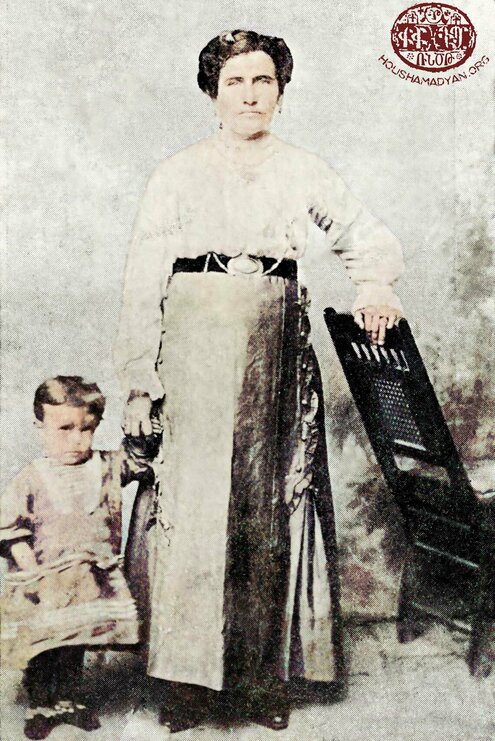
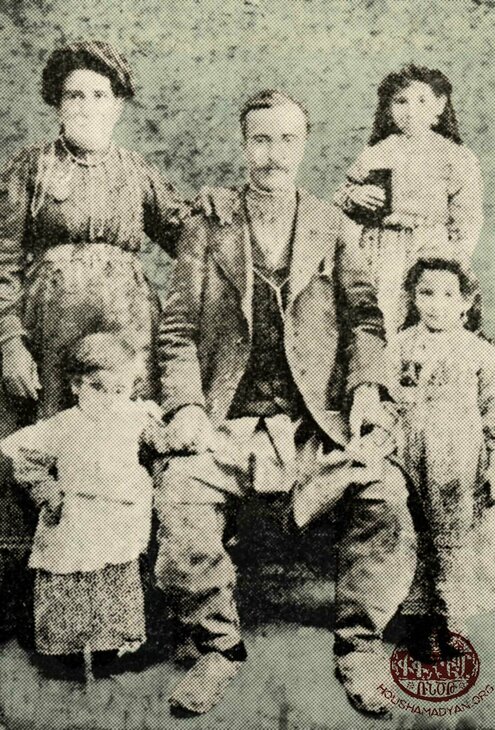
Harsanit (Measles/Rubella)
The patient was made to lie down in a dark and warm room, and given sweets to eat so that he or she could shed the spots [48]. Apelian, an Armenian pediatrician who had previously served as a doctor in the Ottoman Army, wrote the following on measles in 1925, when he had already moved to Boston: “Just because you’ve got measles, don’t keep your home hot like a Turkish bath … The temperature in the room [should be] about 18-20 degrees Celsius … The patient’s bed must be light and warm. Give the patient water, water mixed with molasses, sherbet, tan, and yogurt … Beware of strong lights in the room” [49]. The treatments prescribed by the lady hekims of Hayni mostly aligned with Apelian’s modern medical advice, with the exception of the instructions to have the patient sleep in a warm bed.
Dzaghig (Dzaghgakhd, Chichek) (Smallpox)
To prevent the spread of smallpox, the people of Hayni used a primitive version of the vaccine they called “perpin.” The first step was to take a drop of the pus from the child’s pustules and to mix it with milk. The second step was to make a small incision, with a razor, on the skin of a healthy child, take some of that blood, and mix it with the pus/milk mixture. The “vaccine” was now ready [50]. According to Apelian, this practice sometimes worked as intended, but often led to more serious cases of smallpox. Apelian writes that this primitive vaccine was the only way to prevent a child from contracting smallpox. He also states that in the 18th century, the wife of the British ambassador in Constantinople, Lady Mary Montagu, had witnessed local Armenians performing this inoculation, and had later popularized it in Britain [51].
To conclude the section on pediatric conditions, we will add that sick children were often made to stand behind the church door, hoping that they would be cured through faith [52].

Treatments for various types of pain
Eye pain
Hayni was located in a thorny valley. As a result, a large portion of the city’s children suffered from discomfort in the eyes, as their playgrounds were mostly the streets and the areas around the local landfill. Just like in Kharpert, dripping the milk produced by a mother nursing a female child was standard treatment for eye pain. There were also other treatments, which were applied directly to the eye. Among these was a mixture of nabat (crystallized, powdered sugar), powdered red ink, tobacco ash, baghleghi (alum), and eggs. In cases of trachoma, the eyelids were scraped with a thimble or geozdashi (copper sulfate) [53].
We will try to explain the abovementioned treatments. We know that sugar is an emollient. According to Wikipedia, eosin (Acid Red) was discovered in 1871 and is used in the production of red ink [54]. Ilaria Romano notes the antiseptic properties of eosin [55]. As for milk, when the eyes are infected, they produce a thick fluid. Presumably, the fats in milk, which are crucial in the production of butter, prevent sticky eyelids; and immunoglobulins can fight bacterial infections [56].
Stye (pl. sties) were another eye condition, which, according to Jamgochian, were treated using traditional, superstitious methods and autosuggestion. The patient would wait for a new moon, and upon seeing it, toss seven grains of barley into a body of water, or rub the affected eye with a grain of barley inherited from his or her family [57]. Grains of barley bear a resemblance to stye cysts.
Throat pain (pharyngitis)
Jamgochian lists the following treatment for throat pain: “Place the second knuckle of the index finger between the upper and lower teeth” [58]. He provides no details regarding the causes of throat pain or the age of those who suffered from it in Hayni (whether they were children or adults). But it would be possible for the tip of the index finger to remove certain bacteria, such as streptococcus A, from the back of the throat.
1) Mustard (Source: https://en.wikipedia.org/wiki/Brassica_juncea#/media/File:Brassica_juncea_-_Köhler–s_Medizinal-Pflanzen-168.jpg).
2) Red pepper (Source: https://en.wikipedia.org/wiki/Capsicum_annuum).
3) Marshmallow (Source: https://en.wikipedia.org/wiki/Althaea_officinalis).
Coccydynia (Tailbone Pain = pain in the lowest end of vertebral column)
We learn from Jamgochian that this condition was treated using osteopathy, as follows: “Someone who had pain in the lower extremity of the back would tie themselves to a rung of the ladder and go up and down it several times” [59]. This type of pain can be caused by accidents, such as slipping and falling on the back. Other causes include pregnancy, menstruation, obesity, or extremely low weight. The coccyx, at the very bottom of the spinal cord, is a sharp bone whose shape is similar to a cuckoo’s beak. The same Latin root can be seen in both words. Today, this type of pain is treated with non-steroidal anti-inflammatory drugs (NSAIDs), the application of hot or cold dressing, warm baths, and other osteopathic interventions [60]. Presumably, the type of exercise prescribed in Hayni would help “straighten” a “crooked tailbone.”
Falls and Fractures
In order to alleviate the pain, the patient would be swaddled in the skin of a newly slaughtered sheep [61]. This may have been effective thanks to the analgesic peptides produced during the catabolism of proteins in the sheepskin.
Back Pain
The first treatment was to apply a mixture of hot red pepper and grape molasses to the affected area. Another popular ointment consisted of red sand and pepper, mixed into a liquid paste [62]. We assume that these ointments were applied to the affected area, which was then covered with a cloth. The sugar in grape molasses is an emollient, while red pepper (Capsicum annuum) contains capsaicin, which allows other substances to be absorbed through the skin. Years ago, one could still find the ointment called Capsolin, made from the same substance, sold as a topical analgesic in pharmacies. Capsaicin continues to be used in modern medicine as an external analgesic intervention [63].
Paralysis, Madness, or Intense Midsection Pain
For all three of these conditions, the prescribed treatment in Hayni was sacrificing an animal at the Diben Monastery.
Heart Pain
Heart pain can have various underlying causes, but Jamgochian does not delve into etiology. He simply writes that to treat this condition, patients would drink coffee mixed with kakola and topalagh [64]. According to Mrs. Rachel Demirdjian of Montreal, who has a small botanical garden behind her home and is fluent in Turkish, kakola is an adulterated version of the word khakhoula, which is cardamom (Amomum cardamon). As for topalagh, it is a type of cypress, specifically Cyperus rotundus [65]. Cardamom is well-known for its ability to treat dyspepsia (indigestion). According to Chevallier, studies conducted in India demonstrate that it can lower blood pressure and that it has anti-spasmodic properties. This aromatic spice can also be mixed with other beneficial herbs, with the synergy resulting in added benefits [66]. Sri Ranjani Sivapalan writes that cypress has diuretic, diaphoretic, analgesic, and anti-spasmodic properties [67]. As for coffee and caffeine, among other properties, it is also an analgesic [68]. It is well-known that heart pain is sometimes accompanied by symptoms of indigestion, such as flatulence and eructation (belching), which can be treated with aromatic spices and anti-spasmodic medication.
Stomach and Intestinal Pain
These conditions were treated with a trio of herbs, namely “Maryam Grass,” topalagh, and lasendi. The herbs were boiled together, and the patient drank the tisane. Another treatment was arak, the local panacea [69]. We were not able to identify lasendi. The term is perhaps a typographical error, and may instead be lasdeni, which is the alder/alnus tree. More research needs to be conducted to confirm the identity of this plant. We have already mentioned the benefits of topalagh. “Maryam’s Grass” is herb Bennet, Geum urbanum, which is used as a treatment for ulcer pains [70]. We find it odd that arak was used in the case of stomach discomfort, as its use can, in fact, lead to the irritation of the membranes of the digestive tract.
Toothaches
The yellow flowers of the Babounadj plant (Anthemis nobilis, Roman chamomile, Compositae) were used to treat tooth pain. The plant was also locally known as abrim-chambrim and yeritsoug [71]. However, according to Armenag Bedevian’s polyglottic dictionary of plant names, babounadj asfar was an entirely yellow flower, also called abrim-chambrim and used as a fabric dye (Anthemis tinctoria, golden marguerite) [72]. From Al-Snafi’s research, we know that the Roman chamomile has anti-spasmodic, anti-inflammatory, and anti-bacterial properties [73]. These properties would understandably help alleviate tooth and mouth pain. Presumably, tisanes made from the flowers were used to rinse the mouth.

Other Conditions
Fever
The patient was made to lie down on a murdered person’s grave and doused with cold water while others chanted, “Run, a snake’s coming!” The patient would get up and run, and according to Jamgochian, the fever would disappear [74]. Unfortunately, there was no lack of graves of murdered people in the Armenian cemeteries of Ottoman Armenia.
Tuberculosis
This disease was not known in Hayni. Nevertheless, it was considered untreatable [75].
Dysentery (Shigellosis)
This disease caused intense, often watery, and sometimes bloody diarrhea. While many other conditions can cause diarrhea, in the case of dysentery, it is caused by bacteria of the Shigella type. Shigella is present in human feces, from which it can infiltrate groundwater and drinking water [76]. In Hayni, the water distribution and sewage systems were in an unenviable state. Therefore, it is likely that dysentery wreaked havoc in the town. Jamgochian writes that locals suffering from dysentery were given decoctions of the spice called ishoudjofs to drink [77]. Armenag Bedevian’s dictionary of plant names lists more than 20 plants that begin with the root ish or ishou. However, none of these have medicinal properties.
Gul Jan and his colleagues studied 34 plants that are used in Pakistan as treatments for diarrhea and dysentery. But we could not identify ishoudjofs in that list, either [78].
Common Cough
Jamgochian writes that in Hayni, the common cough was treated by drinking a decoction of a plant called kzvan [79]. Bedevian’s dictionary of plant names lists five plants that begin with the root kz-: kzir, kziroug, kzmaz, kzmasd, and kzotsnin. Aside from the last, the others have no medicinal properties. As for kznotsnin (Myrrhis odorata, sweet cicely), according to Grieve, it is consumed as a tisane in order to help eject phlegm and to treat other medical conditions. The plant is also used as a topical treatment for skin lesions [80].
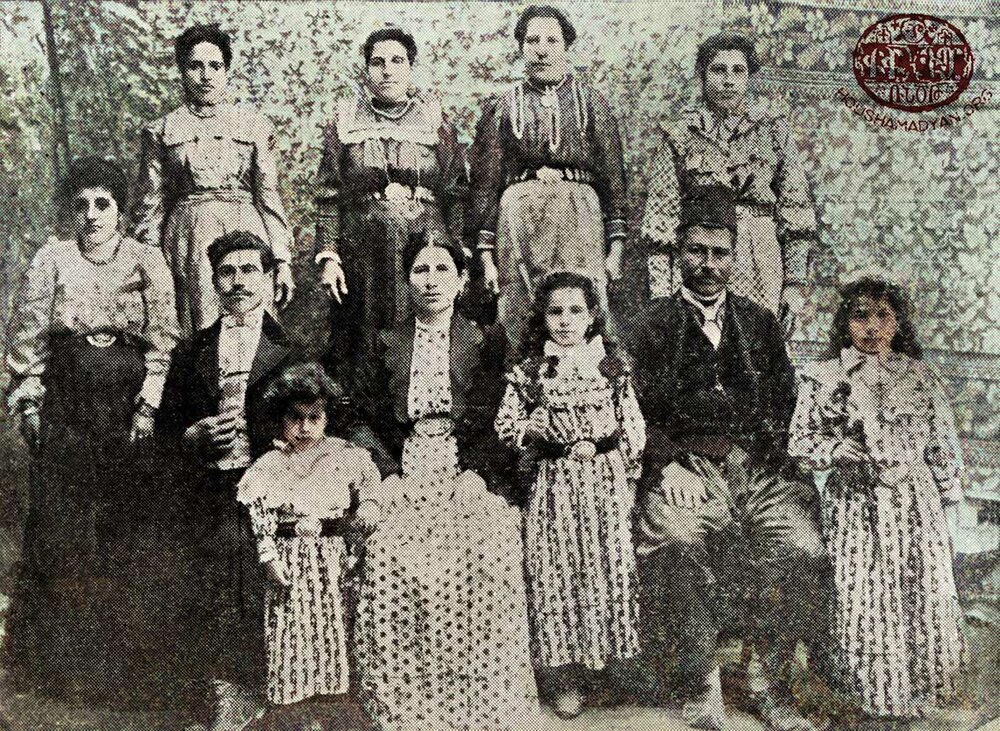
Togh (Malaria)
This illness is transmitted from one person to another via the transfusion of blood droplets. Malaria was locally known as togh (shakes), as convulsions are one of its more prominent symptoms. The water-rich area of Hayni often became swampy, an environment in which the female Anopheles mosquitoes that can transmit malaria thrive. When these mosquitoes bite their victims, they inject into their bloodstream a unicellular parasite called plasmodium, which infects the red blood cells. These plasmodium parasites complete their life cycle in the victim’s body, and as they do so, the patient experiences various stages of the disease with various associated symptoms – high fever, headaches and body pains, intense perspiration, delirium, and convulsions [81].
Convulsions (shakes) are the body’s natural response to the high fever. However, extended convulsions can create small pits in the nerves of the muscle, which can be painful.
Jamgochian writes that togh was the result of “uncleanliness,” which is not supported by modern science. Among other treatments, Jamgochian mentions feeding the patient lice with raisins. Another treatment was to suddenly push the patient into the cold stream that flowed beside the town’s tannery. The latter method was another way of “scaring” the patient, a common treatment for various illnesses. Three other bodies of water are mentioned as suitable for pushing malaria patients into – the springs of Vozirig, Nurkhuniz, and the Dbnou Monastery. Bathing in these streams was generally considered to be salubrious. Locals would also bathe in the spring near Ambila to treat their togh, into which they would also throw an egg and salt, and afterwards tie a strip of their clothing to the nearby holy tree. Another treatment for togh was massaging the body with yellow roses.
In case of togh during the winter months, the patient would have to climb a mulberry tree and shake the branches, waiting in vain for mulberries to fall. The logic was that since the illness was not constrained to the winter months, and mulberries were not in-season during the winter, the togh would have to disappear… [82]
Bathing in cold water can relax the muscles, counteract fever, and enhance lymphatic circulation, strengthening the body’s immune system. However, we could not understand the role that the egg and salt played in the process, nor could we understand the precise usefulness of massages with yellow roses (unless we accept that massages somehow alleviated convulsions).
Jaundice
This most visible symptom of jaundice is the yellowing of the skin, the white of the eye, and of urine; as well as by discoloration of feces.
Jaundice is caused by the buildup of bilirubin (a substance produced naturally by the body from old red blood cells) in the bloodstream. In healthy individuals, bilirubin is absorbed by the spleen and excreted from the body via the intestines. The presence of excess bilirubin is called hyperbilirubinemia. Jaundice can have various causes, including stones that block the liver, the Epstein-Barr virus, or Hepatitis (A, B, or C). Hepatitis B and C are viral infections and are transmittable [83].
In Hayni, locals treated jaundice by drinking a tisane made from the plant they called otsou dzaghig [snake flower].
Armenag Bedevian’s dictionary of plant names lists about 15 plants with the root ots (since the times of the Garden of Eden, snakes have been notorious), only one of which is used in treating liver-related ailments – otsategh (snake medicine) or otsi skhdor (garlic of the snake), a plant of the Gentiana species. Garabed Kapigian’s Hay Pousashkharh [Armenian Flora], citing Amirdovlat of Amasia, also mentions this plant, adding: “Grind this plant in wine and drink to alleviate liver pain” [84]. The same treatment is used in contemporary Persian folk medicine to treat swollen and painful livers. It is also used as a hepaprotective agent [85].
Atherosclerosis
This condition involves the formation of clots of fat in medium-sized and large arteries, leading to atheroma. This leads to a reduction in blood flow and the blockage of arteries [86]. The result can be a heart attack or stroke. Jamgochian writes that once a year, when people visited the barber, the latter would use his razor to make a cut on their arms and bleed them [87]. It would be interesting to learn how atherosclerosis was diagnosed in Hayni and why the locals believed that the usage of a razor would prevent the clogging of the arteries.
Bagharutyun (Catching Cold)
This probably referred to backaches resulting from exposure to cold air. In Hayni, the treatment was to “hold koulindj.” This was similar to modern osteopathy and physiotherapy practices. The patient’s affected shoulder would be rubbed, the head moved right and left, then the back and neck would be cracked forcefully. Another treatment was treading on the back [88]. Notably, in Kharpert, backpain was called khoulindj and was also treated using osteopathic means.
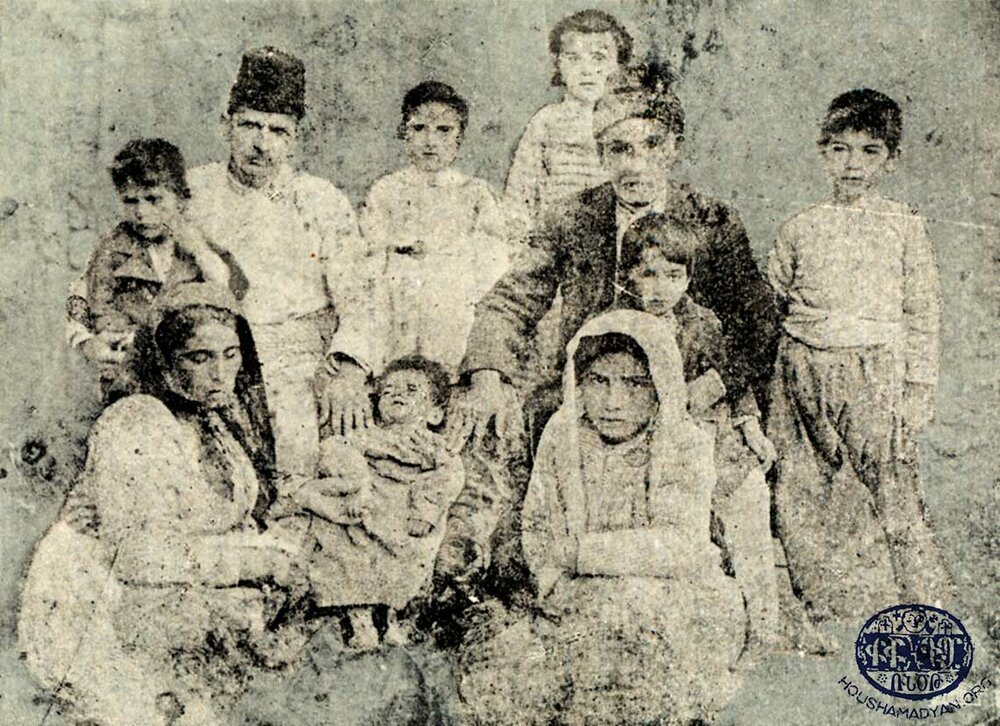
Avaz (Kidney Stone, Calculi, Urolithiasis)
The deposits of various mineral substances can crystallize in the bladder or along the urinary tract and form small grains or larger chunks (“stones”). If the grain is larger than 5 millimeters in size, it can cause pain during urination, or even block the urinary tract [89]. In Hayni, the primary treatment was drinking a tisane made from the plant called khbuzoug [90]. This word is similar to the Arabic word khbeiz, which is the marshmallow plant (Malva sylvestris or Althea officinalis). Grieve writes that khbeiz, among other medicinal properties, can also alleviate various types of pain in the bladder, loosen and expand the urinary tract, and stanch bleeding [91].
Kami
This condition was characterized by pains caused by exposure to currents of cold air. The people of Hayni treated it by wrapping a mixture of crushed artoza and henna around the affected area. Another treatment involved the application of porcupine, pig, or turtle meat to the affected area. A third treatment involved the application of scorpion parts heated in olive oil to the affected area [92]. It is possible that the decomposition of the flesh of these animals produced, among other things, analgesic peptides; and the heat may have increased blood flow to the area and thus alleviate pain. As for the heated scorpion parts in oil, some of the scorpion’s venom would be present in that mixture. According to M. Ahmadi and A. Zare Mirakabadi’s research, arthropod venom contains analgesic and anti-inflammatory substances [93]. As for artoza, we were not able to identify this plant. According to Chuku’s research, henna leaves, aside from producing dye, also contains anti-inflammatory substances [94].
Goghadab (Pleurisy/Pleuritis)
The pleural cavity, which is the cavity between the lungs and the ribcage, contains a small amount of lubricating fluid that facilitates natural inhalation and exhalation. If the membrane in the cavity becomes infected, this lubricating fluid becomes viscous, causing breathing difficulties and chest pain, called pleuritic pain [95]. In Hayni, this condition was treated with the application of heat. A chicken with black feathers would be pounded, heated, and tied to the chest. Other treatments included an ointment consisting of wheat flakes and salt and the application of a sack of heated rocks to the chest [96]. It is known that black substances better preserve heat. It is possible that the proteins in animal flesh, through the process of decomposition and fermentation, produced substances with analgesic properties, such as peptides [97].

Conclusion
Penyamin G. Jamgochian writes that there were no practicing doctors or pharmacists in Hayni. Instead, the locals sought treatment from the hekims, experienced women whose practices were based on the knowledge they had inherited from their elders and the medicinal properties of the local flora. In four pages of his book, Jamgochian provides detailed descriptions of the symptoms and treatments of about 30 conditions, although in some cases he provides only short overviews. The names of medicinal herbs are often only provided in the local dialect, which forced us to conduct thorough and in-depth research to identify them.
We faced the same challenges when studying folk medicine in Van. In some cases, we were able to identify plants thanks to the assistance and linguistic expertise of Mrs. Demirdjian, the owner of a botanical garden in Montreal. However, there were still some plants that we could not identify, including lasend/lasden, ishoudjofs, kzvan, and otsou dzaghig. In some cases, we were only able to identify plants tentatively. Whenever we encountered an unknown plant name in the Hayni dialect, we endeavored to think of the closest alternative pronunciations, to analyze the plant’s possible chemical composition, and compare possible candidates to the descriptions provided by Jamgochian.
It was interesting to learn that tuberculosis was not present in Hayni. Nor did we find any references to the health effects of the consumption of alcohol and sugar, despite the fact that the locals consumed large amounts of wine, arak, and preserves made from grapes.

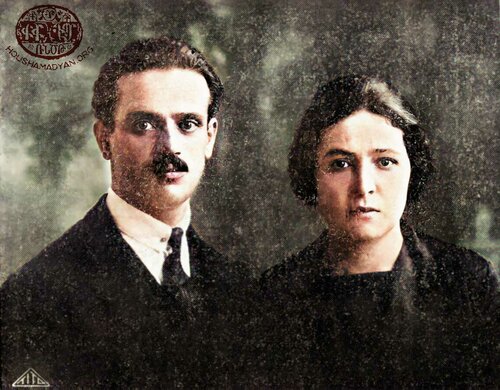

- [1] Penyamin G. Jamgochian, Hayni: Deghakragan, Azkakragan, Badmakragran [Hayni: a Geographic, Ethnographic, and Historical Study], G. Donigian Press, Beirut, 1951, p. 13.
- [2] Ibid., p. 64.
- [3] Ibid., p. 20.
- [4] Ibid., p. 22.
- [5] Ibid., pp. 23-25.
- [6] Murli Dharmadhikari, “Composition of Grapes,” https://www.extension.iastate.edu/wine/files/page/files/compositionofgrapes.pdf.
- [7] Jamgochian, Hayni…, pp. 61-62.
- [8] Ibid., pp. 21-25.
- [9] Ibid., p. 18.
- [10] Ibid., pp. 38-39.
- [11] Ibid., pp. 34-35.
- [12] Ibid., p. 37.
- [13] Zhang Qi, Traditional Medicine Definition, World Health Organization.
- [14] Jamgochian, Hayni, p. 73.
- [15] Ibid., pp. 78-79.
- [16] Ibid.
- [17] Ibid., p. 79.
- [18] Ibid., pp. 79-80.
- [19] Ibid., pp. 71-72.
- [20] Hetvi N. Paten, Harsh B. Desai, and R. Krishnamurthy, “Plants as booster for lactation,” Natural Products, An Indian Journal (NPAIJ) 9(7), 2013 (398-304), p. 300.
- [21] Jamgochian, Hayni…, p. 17.
- [22] Ibid., p. 73.
- [23] Ibid., p. 66.
- [24] R. S. Porter et al., “Parasitic Infections (Chapter 180),” Merck Manual, John Wiley & Sons Inc., NJ/Canada, 2009, pp. 1217-1218.
- [25] A. Wade at al., “Copper Sulphate,” Martindale, the Extra Pharmacopoeia, 27th edition, 1977, The Pharmaceutical Press, London, p. 895.
- [26] Armenag K. Bedevian, Polyglottic Dictionary of Plant Names, reprint of 1935 edition, Cairo, Madbouly Bookshop, 1994, p. 89.
- [27] M. Malmir et al., Abstract from “A comprehensive review of the medicinal plants from the genus Asphodelus”, Plants, 7(1), 20 March 2018.
- [28] Garabed Kapigian, Hay Pousashkharh [Armenian Flora], Jerusalem, Srponts Hagopyants Printing House, 1968, p. 183.
- [29] https://www.thefreedictionary.com/activated%20charcoal.
- [30] Jamgochian, Hayni…, p. 74.
- [31] Porter et al., “Skin Disorders (Section 17, Chapter 197),” Merck Manual, Wiley & Sons, NJ/Canada, 2009, pp. 704-718.
- [32] Jamgochian, Hayni…, p. 74.
- [33] Yan Tian and Fangming Deng, “Phytochemistry and biological activity of mustard (Brassica juncea): a review,” 17 November 2020, pp. 704-718.
- [34] Pradnya S. Rane and Sandip T. Gaikwad, “Medicinal Properties of Onion and Garlic: A Review,” Innovative Food Science & Emerging Technologies, 6(5): 50-57, May 2019.
- [35] Gema Nieto, “Biological Activities of Three Essential Oils of the Lamiaceae Family,” Medicines, Basel, September 2017, 4(3): 63.
- [36] Guiping Guan et al., “Biological Effects and Applications of Chitosan and Chito-Oligosaccharides,” Frontiers in Physiology, 7 May 2019.
- [37] Jamgochian, Hayni…, pp. 74-75.
- [38] https://www.mayoclinic.org/drugs-supplements/sulfur-topical-route/description/drg-20066155.
- [39] Porter et al., “Skin Disorders,” p. 1324.
- [40] Jamgochian, Hayni…, p. 75.
- [41] https://www.healthline.com/health/facial-swelling.
- [42] Jamgochian, Hayni…, p. 75.
- [43] https://www.medicalnewstoday.com/articles/320445.
- [44] Adom Boudjikanian, personal recollections.
- [45] Jamgochian, Hayni…, p. 76.
- [46] Ibid.
- [47] Serine Avakian, Hay Azkakroutyun yev Panahusoutyun: Ardjag [Armenian Ethnography and Lore: Ardjag], v. 8, Academy of Sciences of the Armenian Soviet Socialist Republic, Yerevan, 1978, p. 82.
- [48] Jamgochian, Hayni…, p. 76.
- [49] A. S. Apelian, Madyan Mangants [Book of Children], Hairenik Press, Boston, 1925, p. 206.
- [50] Jamgochian, Hayni…, p. 76.
- [51] Apelian, Madyan Mangants, p. 211.
- [52] Jamgochian, Hayni…, p. 76.
- [53] Ibid., p. 74.
- [54] Wikipedia: Eosin.
- [55] Ilaria Romano et al., “Controlled antiseptic/eosin release from chitosan-based hydrogel modified fibrous substrates,” Carbohydrate Polymer, v. 131, 20 October 2015, pp. 306-314.
- [56] Kelly M. Jackson and Andrea M. Nazar, “Breastfeeding, the immune response, and long-term health,” The Journal of the American Osteopathic Association, April 2008, v. 106, pp. 203-207.
- [57] Jamgochian, Hayni…, p. 76.
- [58] Ibid., p. 75.
- [59] Ibid.
- [60] https://my.clevelandclinic.org/health/diseases/10436-coccydynia-tailbone-pain.
- [61] Jamgochian, Hayni…, p. 75.
- [62] Ibid., p. 76.
- [63] Julie L. Olenak, “Over the Counter Analgesics: A Closer Look at Recent Updates,” Inside Pharmacy, April 2014, v. 2, n. 2.
- [64] Jamgochian, Hayni…, p. 75.
- [65] Telephone conversation with Raphael Demirdjian, April 2021.
- [66] Andrew Chevallier, “Cardamome,” Encyclopédie des Plantes Médicinales, 2018, Selection of Readers Digest/Publication Mondus Vivendi Inc., Canada, p. 93.
- [67] Sri Ranjani Sivapalan, “Medicinal uses and Pharmacological activities of Cyperus rotundus
- Linn. – A Review,” International Journal of Scientific and Research Publications, v. 3, n. 5, May 2013.
- [68] Jana Sawynok, “Caffeine and pain,” https://pubmed.ncbi.nlm.nih.gov/21041029/.
- [69] Jamgochian, Hayni…, p. 75.
- [70] Chevallier, “Benoite,” pp. 216-217.
- [71] Jamgochian, Hayni…, p. 75.
- [72] Bedevian, Polyglottic Dictionary of Plant Names, pp. 64-65.
- [73] Ali Esmail Al-Snafi, “Medical Importance of Anthemis Nobilis,” Asian Journal of Pharmaceutical Science and Technology, v. 6, n. 2, 2016, pp. 89-95.
- [74] Jamgochian, Hayni…, p. 76.
- [75] Ibid.
- [76] Porter at al., “Bacterial Infections (Section 16, Chapter 197),” pp. 1174-1176.
- [77] Jamgochian, Hayni…, p. 76.
- [78] Gul Jan, Mir Ajab Khan, and Farzana Gul, “Ethnomedicinal Plants Used Against Diarrhea and Dysentery in Dir Kohistan Valley (NFWP), Pakistan,” Ethnobotanical Leaflets, n. 12, 2008, pp. 620-637.
- [79] Jamgochian, Hayni…, p. 76.
- [80] M. Grieve, “Myrrhis odorata,” https://www.botanical.com/botanical/mgmh/mgmh.html.
- [81] Porter et al., “Malaria,” pp. 1218-1220.
- [82] Jamgochian, Hayni…, pp. 73-74.
- [83] Adult Jaundice: https://my.clevelandclinic.org/health/diseases/15367-adult-jaundice.
- [84] Garabed Kapigian, Hay Pousashkharh, pp. 254-255.
- [85] Fatemeh Mirzaee et al., “Medicinal, biological and phytochemical properties of Gentiana species,” Journal of Traditional and Complementary Medicine, October 2017, 7(4), pp. 400–408, published online on 28 January 2017.
- [86] Porter at al., “Atherosclerosis,” pp. 396-401.
- [87] Jamgochian, Hayni…, p. 75.
- [88] Ibid.
- [89] Wikipedia: Kidney stone disease.
- [90] Jamgochian, Hayni…, p. 74.
- [91] M. Grieve, “Marshmallow,” https://www.botanical.com/botanical/mgmh/mgmh.html.
- [92] Jamgochian, Hayni…, p. 74.
- [93] Maryam Ahmadi and Abbas Zare Mirakabadi, “Study on the anti-inflammatory effect of scorpion (Mesobuthus eupeus) venom in adjuvant-induced arthritis in rats,” Archives of Razi Institute, v. 64, n. 1, June 2009, pp. 51-56.
- [94] L. C. Chuku, Nnamdi Chinaka, and Dada Damilola, “Phytochemical Screening and Anti-Inflammatory Properties of Henna Leaves (Lawsonia inermis),” European Journal of Medicinal Plants, December 2020.
- [95] https://healthlinkbc.ca/health-topics/tj8148.
- [96] Jamgochian, Hayni…, p. 74.
- [97] Z.F. Bhat, Sunil Kumar, and Hina Fayaz Bhat, “Bioactive peptides of animal origin: a review,” Journal of Food Science and Technology, September 2015, v. 52, n. 9, pp. 5377-5392.
